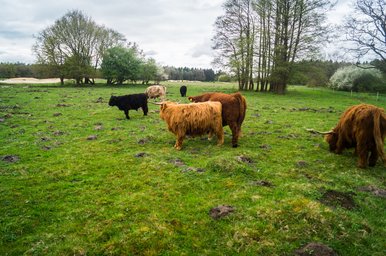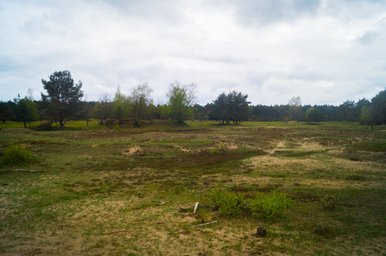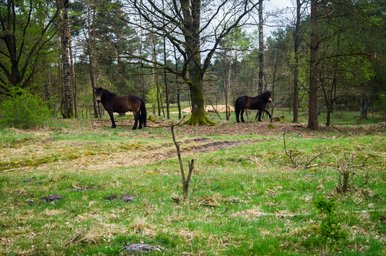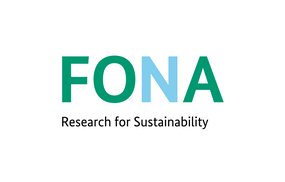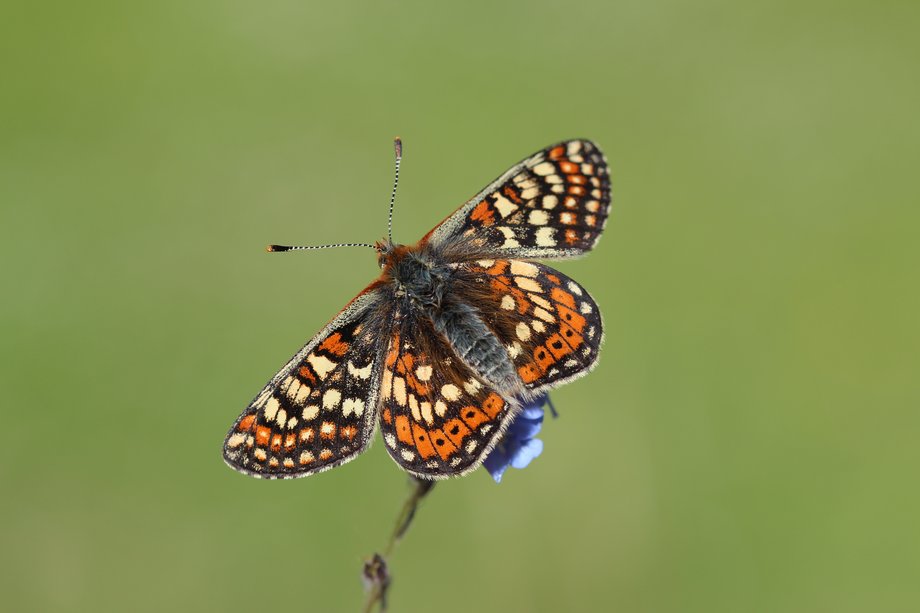
The marsh fritillary (Euphydryas aurinia) is a butterfly from the family of brush-footed butterflies (Nymphalidae). Its wingspan ranges from 35mm to 38mm. The marsh fritillary is listed in Annex II of the Habitats Directive and occurs in both wet and dry grasslands. Extensive land use that takes into account the different development stages of the butterfly, the forage plants of its caterpillars (almost exclusively Succisa pratensis in Northern Germany) and the nectar plants of the imagos promotes the populations of the species. In case of excessively extensive land use or long-term fallows, the caterpillar no longer receives enough sunshine and the species disappears. In the long term, the food plant (rosette) also disappears. The migration of this not very mobile butterfly species is strongly influenced by the landscape structure: along suitable habitat axes, the butterfly can migrate up to 25 km. Extreme events related to climate change such as heavy summer rains or periods of drought can lead to the extinction of small populations, which are then not recolonized due to the lack of habitat connections. General warming in the spring can lead to desynchronization with both feed and nectar plants, so that the proper food resources are not available when the animals need them.
